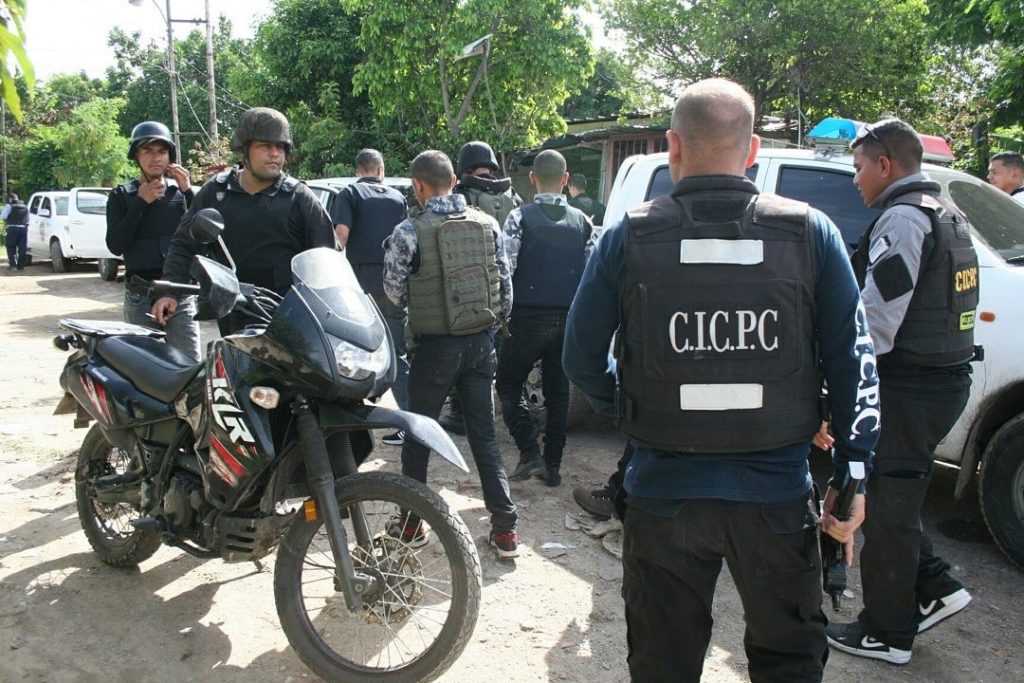Pedro Pérez & Jonathan Ferguson
An early Colt SP1 (Sporting Purpose model 1) rifle was recovered from a criminal group in Venezuela in the early hours of 21 November 2019. A task force composed of personnel from Cuerpo de Investigaciones Científicas Penales y Criminalísticas (‘Scientific Penal and Criminal Investigations Corps’; CICPC) and Comando Nacional Antiextorsión y Secuestro (‘National Anti-extortion and Kidnapping Command’; CONAS) executed an operation against the Tren de Aragua gang. Four members of the aforementioned gang were killed, and a small cache of weapons was confiscated. This cache consisted of a Walther PPK/S (a variant specific to the American market) and an FN Model 1910, both self-loading pistols chambered for 7.65 × 17SR mm (.32 ACP); an S&W Model 36 revolver chambered for .38 Special; 180 5.56 × 45 mm cartridges; and, most notably, an early Colt SP1 rifle with two FN Herstal FNC steel 30-round magazines. The SP1 was the original civilian-legal variant of the AR-15 self-loading rifle, redesigned to operate in semi-automatic mode only and first offered for sale in 1964. In many ways it began the current trend of civilian ownership of AR-15 type rifles in the U.S.

The serial number was identified through a local source and the weapon dated to 1965 via Colt’s online serial number database. According to a Colt letter of provenance included in the excellent Vickers Guide: AR-15 Volume 1 (2nd ed.), the first SP1 rifle was produced in May 1964. Given the early date of the recovered example, it was in remarkable condition as the images show. Early Colt ‘sporters’ retailed for $189.50 (competitive for the time), and were intended for hunters, sport shooters, and, later, even survivalists. According to Francis Borek, the SP1 was marketed as a “lightweight, space age sporting arm”.

FNC steel 30-round magazines are quite common in Venezuela, the FNC 5.56 × 45 mm rifle having been issued for many decades to parachute units in the Venezuelan Army. As a result, it is quite common to see M16 rifles in Venezuelan military service fitted with FNC magazines in lieu of the original (aluminium) Colt-manufactured equivalent. It is highly likely that these magazines were stolen from a military armoury. Semi-automatic-only AR-15 rifles were formerly legal for civilians to own (with the appropriate permit) in Venezuela, but have also been used by security forces. As such, it is unclear what the local source for the weapon was, but it was most likely stolen in any case. Further investigation could reveal the original owner following the rifle’s production.

Sources
Bartocci, Christopher, James Rupley, Larry Vickers & Daniel Walters. 2020. Vickers Guide: AR-15 Volume 1 (2nd ed.). Nashville, TN: Mott Lake Publishing.
Borek, Francis. 2017. ‘Gun Review: Colt AR-15 SP1 Rifle in 5.56×45mm NATO’. Guns.com. 11 July. <https://www.guns.com/news/review/gun-review-colt-ar-15-sp1-rifle-in-5-56x45mm-nato>
Colt. 2020. ‘Find Serial Number’. <https://www.colt.com/serial-lookup>.
Zimba, Jeff W. 2008. ‘The Evolution of the Black Rifle – From Vietnam to the War on Terror, This Ever-Changing Rifle System Continues to Evolve’. Small Arms Review. Vol. 11, No. 4.
Remember, all arms and munitions are dangerous. Treat all firearms as if they are loaded, and all munitions as if they are live, until you have personally confirmed otherwise. If you do not have specialist knowledge, never assume that arms or munitions are safe to handle until they have been inspected by a subject matter specialist. You should not approach, handle, move, operate, or modify arms and munitions unless explicitly trained to do so. If you encounter any unexploded ordnance (UXO) or explosive remnants of war (ERW), always remember the ‘ARMS’ acronym:
AVOID the area
RECORD all relevant information
MARK the area from a safe distance to warn others
SEEK assistance from the relevant authorities

